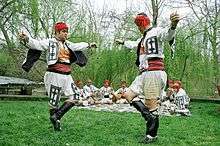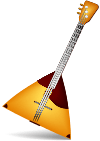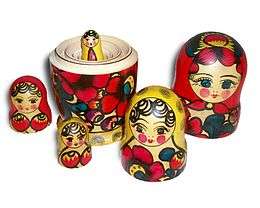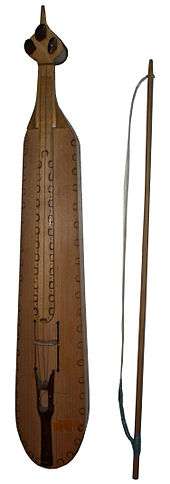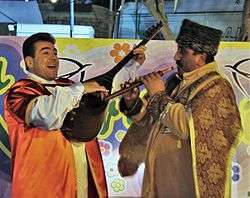Spoon (musical instrument)
Spoons can be played as a makeshift percussion instrument, or more specifically, an idiophone related to the castanets. They are played by hitting one spoon against the other.
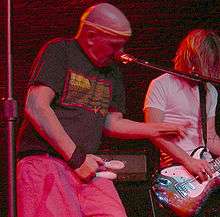
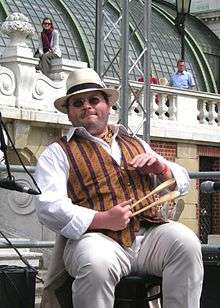
Techniques
- Fire tongs style : A pair of spoons is held tight with concave sides facing out and with index finger between their handles to space them apart. When the pair is struck, the spoons sharply hit each other and then spring back to their original position. The spoons are typically struck against the knee and the palm of the hand. The fingers and other body parts may also be used as striking surfaces to produce different sounds, rhythms, rattles and visual effects.
- Salad serving style: one spoon between little, ring, and long finger; the other spoon between ring, thumb, and index finger in such a way that they can be rotated with ring finger as the common axis. They can be hit to each other at the convex sides by gathering the fingers (mostly middle and thumb).
- Castanets style, two in each hand one spoon held concave-side against the palm held down by the thumb, one between ring and middle fingers with finger tips in the concave side balancing the handle. They can be hit to each other at the convex sides by gripping with the middle and ring fingers.
- One spoon held concave-side against the palm, and handle jammed tight under the wrist watch belt, another in between ring and middle fingers of the left hand hitting the latter castanet style, and a third spoon in the right hand hitting both spoons in the left hand, drum stick style.
American folk music
In the United States spoons as instrument are associated with American folk music, minstrelsy, and jug and spasm bands. These musical genres make use of other everyday objects as instruments, such as the washboard and the jug. In addition to common tableware, spoons that are joined at the handle are available from musical instrument suppliers.
British folk music
As percussion, spoons accompany fiddle playing and other folk sets. An example is seen in Midsomer Murders Series 6, episode 2, where Detective Sergeant Gavin Troy plays the spoons at a house party joining a fiddle player who is entertaining the guests. He uses the first technique. The guests also contribute percussion by hand clapping in time with the music.
The song "This Old Man" refers to a related concept, except with sheep bones (hence paddywhack) instead of spoons.
Canadian folk music
In Canada, the spoons accompany fiddle playing in Québecois and Acadian music. Also, Newfoundland and the Atlantic Provinces popularly play the spoons at family gatherings. Playing the spoons in Western Canada is closely related to the Métis culture.
Greek folk music
The spoons in Greece, as a percussion instrument are known as koutalakia (Greek: κουταλάκια), which means also, spoon. The dancers hold the wooden koutalakia, to accompany with a variety of knocks their dance rhythms. The most of them, are very beautifully sculpted or painted.
Russian folk music
Spoons are often used in ethnic Russian music and are known as lozhki (Russian: Ло́жки [plural]; Pronunciation: ![]()
These wooden spoons are commonly used in performances of Russian folk music and sometimes even in Russian orchestras.[4] A video of a choir performing a Russian folk song with spoon and balalaika accompaniment can be found below.
Turkish folk music
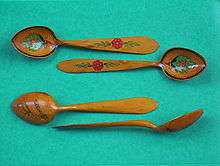
Kaşık (spoon) is a Turkish and Uzbekistan percussion instrument. The ones made from boxwood are particularly favoured. There are also different holding styles.
- The handle of one is taken between the long finger and ring finger, fingertips into the concave part, The Concave part of the second spoon is leaned against the base of the thumb in a back to back position with the first spoon. This is the most popular method used mostly with two spoons in each hand, hands up, dancing. Closing the fist clashes the pairs of spoons to each other. Sometimes the tips of the spoon handles in either hand are brushed against each other to get a different sound.
- The handle of one spoon is held by the ring finger, thumb, and pointing finger, the handle of the other spoon is placed behind the ring finger, but on the inside of the little finger and the long finger in a back to back position with the first spoon. The ring finger works like a hinge and helps to hold both spoons. clasping the fingers lightly causes the spoons to hit each other. This holding style is essentially the same as holding salad spoons for single hand serving; except for this purpose the spoons should not be back to back.
- The two spoons are held back to back on either side of the right hands index finger, the tips of the spoon handles are held lightly with the little and ring fingers the spoons are then hit down to the leg, up to the inside of the left hand, left thumb and index finger hold lightly and let both handles slip through to get several spoon sounds in one up down movement, spoon tips are allowed to skip over several left hand fingers or folds of the left sleeve to get a repetitive roll. This is the most popular method when sitting.
- The left hand holds spoons as in the first style, a third spoon is pushed under the strap of the watch, and the right hand holds the fourth spoon. This is used when sitting.
Musicians
- Duncan Campbell British Reggae singer, formerly the only registered spoon player with the Musicians' Union in the United Kingdom.
- Bobby Hebb and Noel Crombie are well-known spoons players.
- In 1994, Seattle Grunge band Soundgarden had a hit with the song "Spoonman" that features a spoons performance by street artist Artis the Spoonman.
- British actor Sylvester McCoy, who most notably played the seventh incarnation of Doctor Who, is adept at playing the spoons, as evidenced during his tenure on Doctor Who as well as in his role in Ian McKellan's King Lear.
- Sam Spoons, drummer of the Bonzo Dog Doo Dah Band.
- Late Russian president Boris Yeltsin was known to enjoy performing with wooden spoons among his officials.[5][6]
- Children's Singer, Eric Nagler plays the spoons.
- Californian Músico, Sr. Coronar, a member of the San Joaquin Valley's Ojos de la Alma known for using spoons in traditional Mariachi.[7]
- Australian Deb 'Spoons' Perry, known for her striking style and enthusiasm, has increased Spoon popularity in modern Oceania.
- Irish singer Lisa Lambe plays the spoons in Celtic Woman's songs "Teir Abhaile Riu" and "Dulaman"
- Abby the Spoon Lady[8] is a popular street performer in the USA who plays the spoons.[9]
- A. "Claude" Ferguson published a 35 page booklet, "You, Too, Can Play the Spoons". Claude was featured in the July 2007 issue of the Highlights Magazine. "Spoonful of Music"
References
- "Wooden Spoons". FolkMusic.ru.
- "Russian Folk Instruments -> Lozhki". Slavyane.Nnov.ru. Archived from the original on 2009-07-16.
- "Russian Folk Instruments -> Lozhki (maple)". Slavyane.Nnov.ru. Archived from the original on 2009-07-16.
- "Ложки". Folkinst@narod.ru.
- O'Clery, Conor (2011), Moscow, December 25, 1991: The Last Day of the Soviet Union, PublicAffairs, pp. 21, 143, ISBN 1586487965
- Russia's Yeltsin known for gaffes, off-color jokes (Reuters)
- Sempre, Mario (2015), La Musica Del Valle, PublicaCalifornia
- Brandycharlynn (2014-02-01), English: Abby the Spoon Lady performing in downtown Asheville, NC., retrieved 2017-01-27
- "Living Portrait series: The Spoon Lady". Citizen Times. Retrieved 2015-12-04.
External links
- A close look at playing spoons by Wayne "Rhythm Chef" Jones on YouTube
- Spoons by Aaron Plunkett as heard in the movie Titanic
- A video of a choir performing a Russian folk song with spoon and balalaika accompaniment on YouTube
- 'How to play spoons' in the Irish tradition, on the National Museum of Australia's YouTube page on YouTube
- Video of a fisherman playing spoon and dancing on a pier
